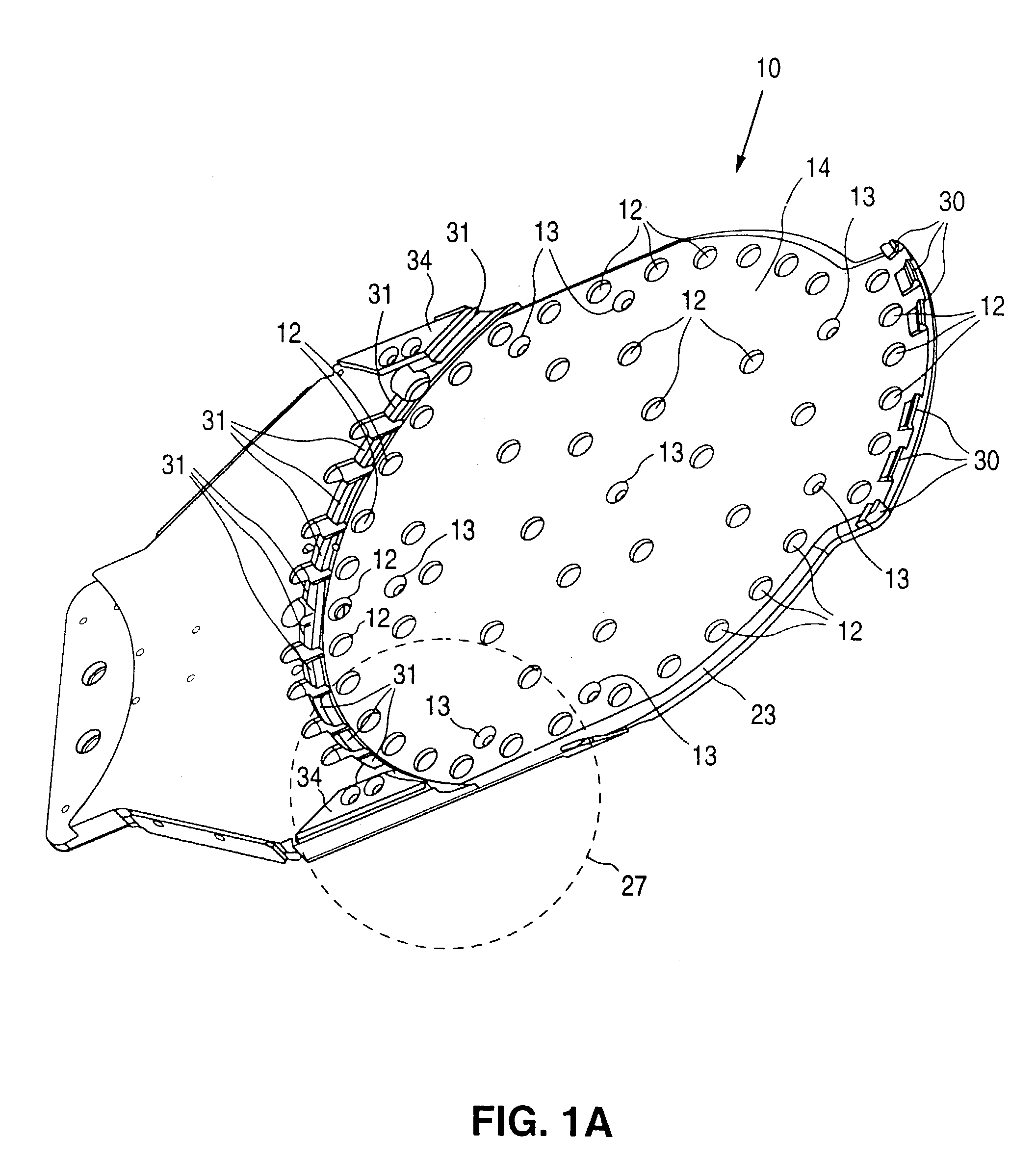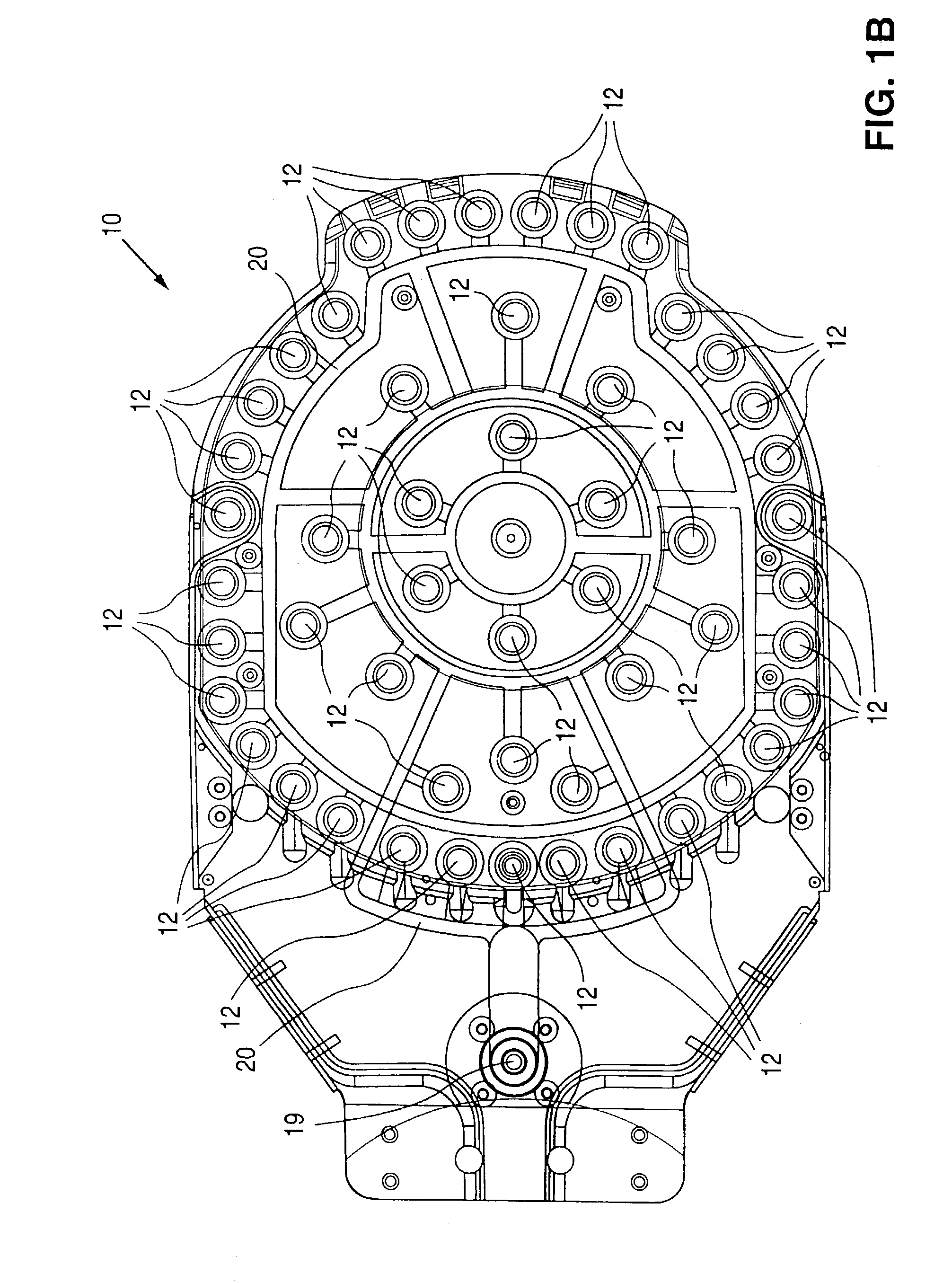Detection and handling of semiconductor wafers and wafers-like objects
a technology of semiconductor wafers and waferlike objects, applied in the field of semiconductor wafer processing, can solve the problems of ineffective support of flexible and/or deformed wafers by conventional end-effectors, ineffective end-effectors that support a wafer from the bottom by gravity, and ineffective end-effectors that support a deformed wafer
- Summary
- Abstract
- Description
- Claims
- Application Information
AI Technical Summary
Benefits of technology
Problems solved by technology
Method used
Image
Examples
Embodiment Construction
[0032]FIG. 1A shows a three-dimensional view of an end-effector 10 in accordance with an embodiment of the invention. In a typical application, end-effector 10 is attached to an arm of a conventional robot for picking-up and placing semiconductor wafers in a semiconductor manufacturing equipment. In one example, end-effector 10 is utilized in the TRU-ETCH 2000 / 3000™ wafer processing system from Tru-Si Technologies, Inc. of Sunnyvale, Calif. Of course, the invention is not so limited and can be generally used for transporting semiconductor wafers and wafer-like objects.
[0033]Referring to FIG. 1A, end-effector 10 includes multiple vortex chucks 12 for supporting a semiconductor wafer. Only some vortex chucks 12 are labeled in FIG. 1A for clarity. Vortex chucks are also described in the following documents: PCT Application WO 97 / 45862; European Patent Application EP 0 807 964 A1; U.S. patent application Ser. No. 09 / 038,642, “HOLDERS SUITABLE TO HOLD ARTICLES DURING PROCESSING, AND ARTI...
PUM
 Login to View More
Login to View More Abstract
Description
Claims
Application Information
 Login to View More
Login to View More - R&D
- Intellectual Property
- Life Sciences
- Materials
- Tech Scout
- Unparalleled Data Quality
- Higher Quality Content
- 60% Fewer Hallucinations
Browse by: Latest US Patents, China's latest patents, Technical Efficacy Thesaurus, Application Domain, Technology Topic, Popular Technical Reports.
© 2025 PatSnap. All rights reserved.Legal|Privacy policy|Modern Slavery Act Transparency Statement|Sitemap|About US| Contact US: help@patsnap.com



